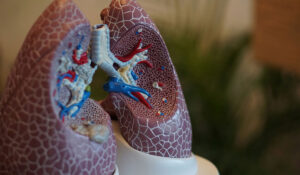Prescription stimulants can improve the lives of people with conditions like attention deficit disorder and narcolepsy, but they are also one of the most commonly misused medications. If you are not taking your medication exactly as prescribed, if you are using it to get high, or if you are taking pills that are not prescribed, you are at increased risk of becoming addicted.
Around 16 million adults use stimulants each year, and five million of those abuse them. Surveys show that people with coexisting conditions like substance abuse disorders, depression, or suicidal ideation are more likely to abuse both legal and illicit stimulants. The most commonly prescribed stimulants are methylphenidate (Concerta or Ritalin); dextroamphetamine (Dexedrine); and a combination of the two (Adderall).
Five Signs of Stimulant Abuse
If your doctor has described stimulants for a medical condition, you need to take them exactly as prescribed. If you take stimulants any other way, you are already misusing them. Most people don’t know they are becoming addicted in the early stages. Once addiction occurs, the thinking process changes, and it becomes more difficult to stay on track. Here are five signs that you might have a problem:
1. Mood Changes
 Image Source: Pixabay
Image Source: Pixabay
Psychological symptoms of addiction include symptoms like hopelessness, paranoia, anxiety, hostility, anger, mood swings, hallucinations, and insomnia. If you are suddenly becoming impatient, arguing with people you used to get along with, or experiencing feelings of negativity and worthlessness, it might be time to ask if the problems are coming from your prescription. Stimulants affect the way the communication between the neurons and brain circuits, potentially damaging physical and mental health.
2. Lifestyle Changes
People who are addicted to stimulants often become secretive and develop financial or legal problems. They may have trouble getting things done, lose their jobs, neglect their responsibilities, resort to dangerous practices to get the fix they need, and neglect their physical appearance or health. The kind of people they hang around with changes, and they lose interest in the things they enjoyed in the past.
3. Physical Changes
Addiction may also lead to physical problems, including the following: insomnia, increased heart rate and blood pressure, digestive problems, weight loss, restlessness, changes in sex drive, and dehydration. With longer use, symptoms like tooth loss, ulcers, kidney problems, extreme weight loss, inability to feel pleasure, electrolyte imbalances, vitamin deficiencies, and malnutrition may occur.
4. Behavioral Changes
 Image Source: Flickr
Image Source: Flickr
As the addiction worsens, tolerance to the drug builds, and it becomes necessary to use larger doses to experience the same effects as with smaller ones. People may also use drugs to treat or hide withdrawal symptoms, such as restlessness, depression, shaking, anxiety, and sweating. The need to get the substance becomes the center of the addict’s life, leading to loss of friends and community. If left untreated, extreme depression, paranoia, infections, and blackouts may occur.
5. Withdrawal
Even people who are taking stimulants as prescribed face risks of withdrawal if they suddenly stop taking their medication. Withdrawal can be extremely uncomfortable and may, in some cases, lead to severe depression and thoughts of suicide. The withdrawal side effects vary from one person to another and may include symptoms like cravings, nightmares, sleeping too little or too much, hunger, inability to enjoy life, tiredness, and hunger. In fact, anyone taking stimulants can experience mild symptoms when the drug wears off between doses. While it is not life-threatening, withdrawal is best handled with the help of addiction specialists.
If you are misusing prescription stimulants or if you think your prescription is causing unwanted changes in your health and lifestyle, please talk to your doctor or an addiction center about the safest way to handle your problem. Addiction is an illness, and it is highly treatable.
Featured Image Source: patrick.af.mil



